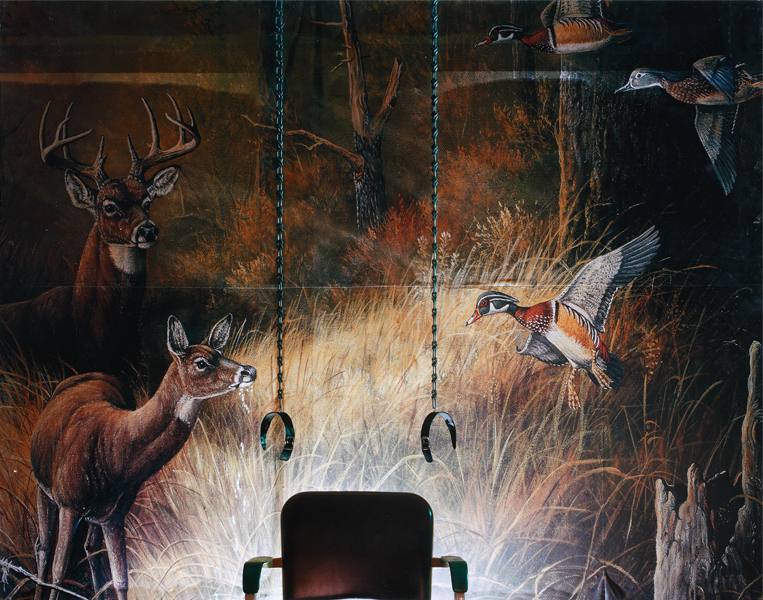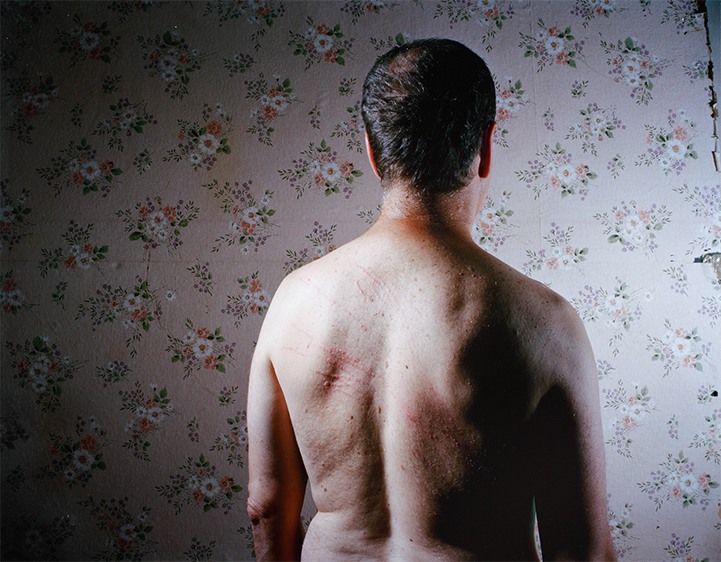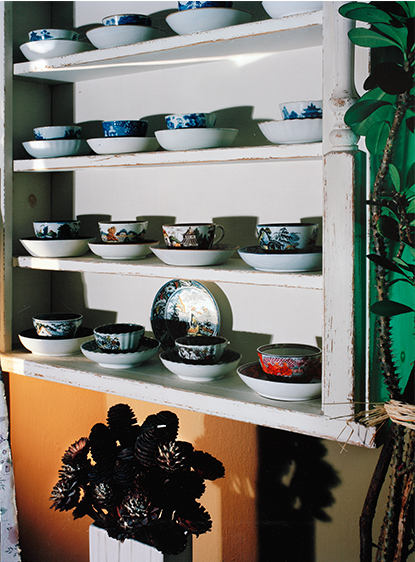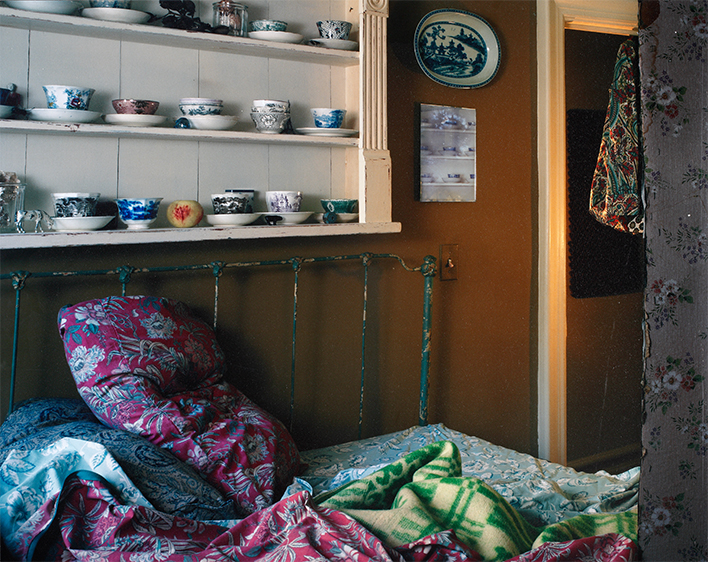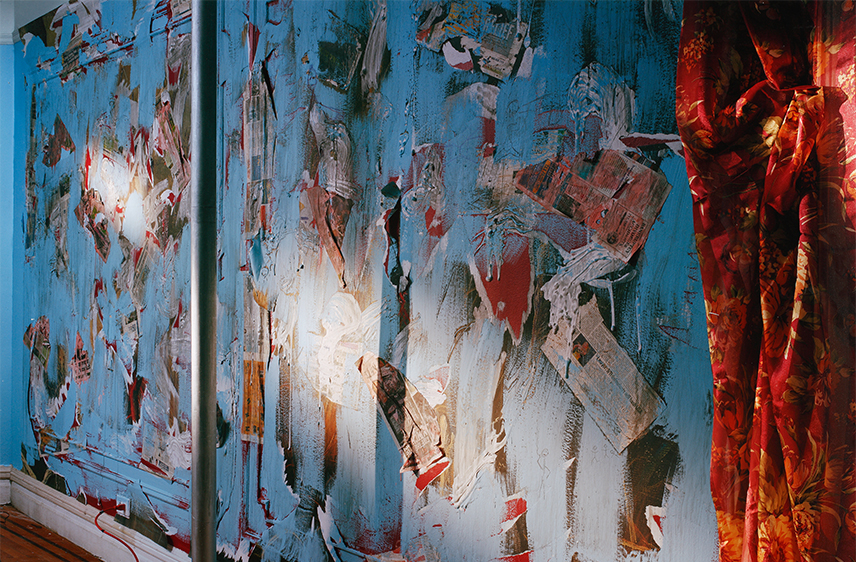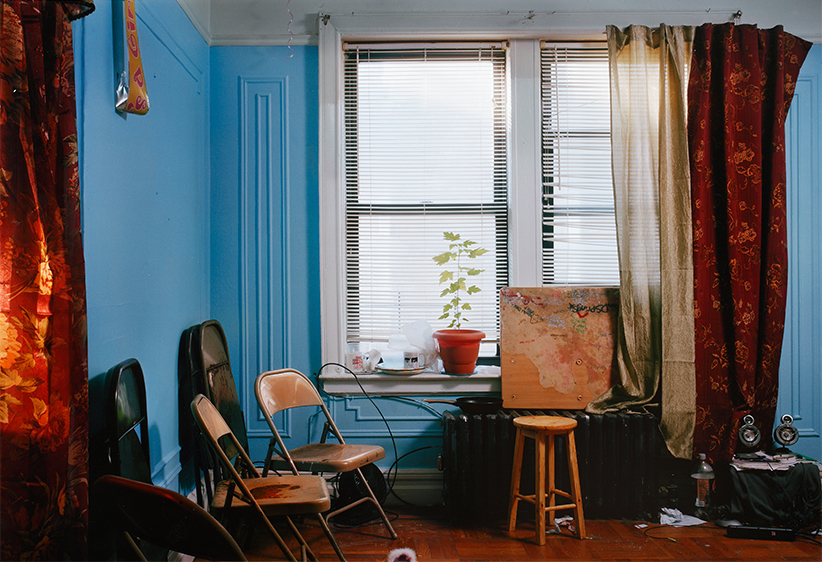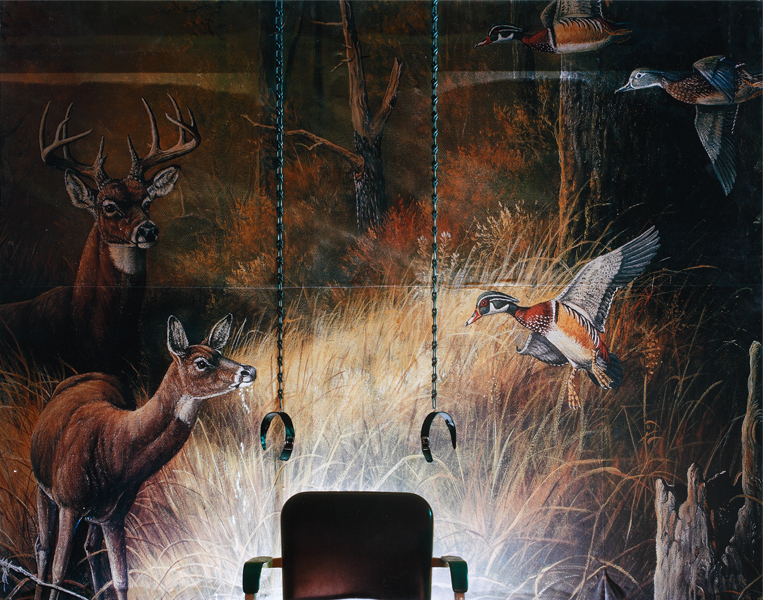
HRVOJE SLOVENC,
HOME THEATRE
photographs
OCTOBER 8 – NOVEMBER 5, 2020
Artget Gallery, Republic Square 5/I
Artistic director of the Artget Gallery in 2020: Aleksandar Kostić
HOME THEATRE
Know that all of Nature is but a magic theatre.
Shvetashvatara Upanishad
In Hrvoje Slovenc’s series of photographs Home Theatre I can see a certain connection with Rembrandt’s painting The Anatomy Lesson of Dr. Nicolaes Tulp. There is nothing hidden about professor Tulp’s procedure (on the contrary, it is a class, a demonstration) in this genre scene that reminds us of theatre: the professor analyzes a dissected body, reduced to matter devoid of ethos and history. What is available to our look in this presentation with a metaphysical message is the inside, baroque structure of the tissue below the skin.
Hrvoje Slovenc’s cut is analytical and precics in a similar way. His method, as well as the choice of subject matter of his research/art endeavor is a sort of anatomy lesson about the contemporary world and the human being in it.
The author discloses private, shabby, sophisticated or showy habitats packed with everyday life and habits of their (absent) protagonists, and shows us a layer of a parallel reality: the secret life and scenary of their clandestine obsessions, desires and pleasures. Here, too, the inside is an essential part of life, the baroque structure of sub-consciousness that actually makes us human. As ambivalent animals, we live through the unity of opposed feelings that define us and enable us to comprehend the world. Social norms shape our public aspect, but in intimacy, behind the walls and curtains, we dedicate the time we have to ourselves, to our hidden needs and their fulfillment. So we live our lives on two parallel tracks. According to a famous porn site, during the year 2016 people around the world spent over 4.6 billion hours (approximately 525 thousand years) watching pornography. This make us wonder which of those parallel lives is prevalent and more important for us. Diversity of the living world of sexual fantasies is, of course, boundless.
Perhaps Slovenc’s analytical method, in spite of his emphasized aestheticization, has its origin in an element of the author’s biography and education (MS in Biochemistry). This kind of distance offers and imposes to the viewer a cold and unbiased look. Fascination with the photographic medium often arises from the voyeuristic gaze, from scopophilia. On the contrary, the viewer caught in these chambers seems to become an object of someone else’s observation.
The author’s representation of the sexual preferences of the presumed actors does not have a direct SM (sadomasochistic) iconicity. The elements of this – often very picturesque – iconography are quite reduced or completely lacking in Home Theatre. The viewer recognizes transvestitism and dramaturgy of sexual performance through indirect references to it. The scenes of these experiences are reduced to meticulous stage settings, partly documentary, partly directed on the locations. Richness of detail in presented objects, visual-art quality of backgrounds and general familiarity of real or supplemented furniture, as well as a plethora of semantic digressions, make these spaces more substantial and aesthetical than the usual, futile milieu of pornographic scenery with BDSM (bondage, domination, sadism, masochism) contents. Especially interesting is the non-erotic character of these places, as well as their subtle melancholy and restrained aggression.
The value of the bond between form and content gives these images a character of cinematic suspense, achieved through the elements that are skillfully hidden and positioned beyond the reach of our eye. Like the scene of talking on the phone in Rosemary’s Baby, where the shot is composed so that the face of the actress (Ruth Gordon) is hidden from our view by a doorpost (which made some spectators in movie theatres spontaneously move their heads in order to take a glance behind the obstacle), some of these photos make us want to see what has been deliberately avoided and hidden from our view. Potential spatial and temporal ellipses contribute to the impression that the conventional daily lifestyle merges with the protagonists’ secret lives. A collage modus operandi, executed with disturbing precision in the form of photographic polyptychs, reminds us of a formally different, but perceptually similar visual representations by David Hockney (Joiners) and Joyce Neimanas. Accomplished three-dimensional convincingness, having – besides stage theatricality – some elements of interior design magazine photography, incite the viewer to experience moving through the presented space. This experience, actually created by the movements of the eye, gains its full effect when we cannot see the explicit “crime scene”, i.e. the scene of sexual play. The visual experience of Slovenc’s photographs moves the viewer’s sensuality and desire beyond the prosaic limits established by social norms.
Aleksandar Kostić
Hrvoje Slovenc (b. Zagreb, Croatia, 1976) is a Croatian/American photographer based in New York. He holds MFA in Photography from Yale University School of Art (2010). Among other venues, he exhibited in the Museum of Contemporary Photography in Chicago, Museum of Contemporary Art in Zagreb, National Academy Museum in New York, Palace of Arts in Belo Horizonte, Münchner Stadtmuseum in Munich, and the Bronx Museum.
The exhibited works are the property of the Museum of Arts and Crafts in Zagreb.
